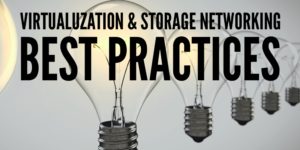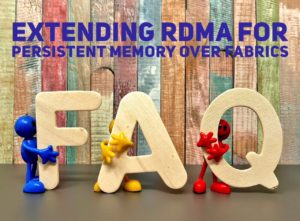
Mike Walker, former chair, SNIA SMI TWG; former IBM engineer
Whether you’re a software provider or a hardware vendor, it’s a good time to check out the latest updates to the Storage Networking Industry Association’s (SNIA’s) Storage Management Initiative Specification (SMI-S) standard. The latest version SMI-S 1.8 v3 is now a SNIA Technical Position that meets your current needs and offers enticing new enhancements for you and your potential new customers. This version will also be sent to the International Organization for Standardization (ISO) for approval, making it a valuable asset worldwide if accepted.
“IT system administrators who demand a choice in storage vendors and infrastructure while ensuring advanced feature enablement through interoperability, have long benefitted from SMI-S,” says Don Deel, chairman, SMI Technical Work Group and SMI Governing Board. “The standard streamlines storage management functions and features into a common set of tools that address the day-to-day tasks of the IT environment.”
Since it was first defined, SMI-S has been continuously updated with new storage management functionality and is now incorporated into over 1,000 storage products. Version 1.5 of the specification received approval by ISO and the International Electrotechnical Commission (IEC) in 2015 and is designated as ISO/IEC 24775.
SMI-S 1.8 v3 represents a significant effort to update the standard. The new version includes a number of editorial changes, clarifications and corrections. It also contains functional enhancements such as new indications, methods, properties and profiles.
Users of SMI-S are being urged to move directly to SMI-S 1.8 v3 since v1.6.1 was the last version that was officially tested. In preparation for submission to ISO, SMI-S 1.8 v3 has been thoroughly reviewed and a number of corrections have been incorporated.
The SMI-S specification is divided into six books which cover the autonomous profiles and component profiles used to manage storage physical and virtual storage area network equipment.
The main new functions since 1.6.1 are in SMI-S 1.8 v3, summarized as follows:
- Fabric Book (Fabric and Switch)
- Peer zoning enhancements
- Enhancements to port speed
- Block Book
- New indications for component health and space management
- Storage Pool Diagnostics
- New method in Block Services
- New methods in Group Masking and Mapping
- Enhancements to Replication Services
- New method in Volume Composition
- Advanced Metrics in Block Server Performance
- Common Profiles Book
- New profile for WBEM Server Management
- New method in iSCSI Target Ports Profile
- Host Book
- New profiles for memory configuration
- Filesystem Book
- New indications for component health and space management
If you would like to hear more details on the recent changes, I recently covered the topic in-depth in a webcast, available as an archived version on the free BrightTALK platform here.
SNIA SMI also offers a comprehensive SMI-S Conformance Testing Program (CTP) to test adherence to the standard. This program offers independent verification of compliance that customers can view directly on the SNIA website at http://www.snia.org/ctp/. Storage buyers can use this information to make sure they are getting software which complies to the latest version of the specification and contains the latest features such as important security functions.
Don’t delay. Update to SMI-S 1.8 v3 today. The specification can be found here. Your one-stop shop for all SMI-S information is: https://www.snia.org/smis.
Get engaged! You can ask and answer questions on the SMI-S Developers Group here









 Mike Walker, former chair, SNIA SMI TWG; former IBM engineer[/caption]
Whether you’re a software provider or a hardware vendor, it’s a good time to check out the latest updates to the Storage Networking Industry Association’s (SNIA’s) Storage Management Initiative Specification (SMI-S) standard. The latest version
Mike Walker, former chair, SNIA SMI TWG; former IBM engineer[/caption]
Whether you’re a software provider or a hardware vendor, it’s a good time to check out the latest updates to the Storage Networking Industry Association’s (SNIA’s) Storage Management Initiative Specification (SMI-S) standard. The latest version  Unlike traditional local or scale-up storage, scale-out storage imposes different and more intense workloads on the network. That’s why the SNIA Networking Storage Forum (NSF) hosted a live webcast “
Unlike traditional local or scale-up storage, scale-out storage imposes different and more intense workloads on the network. That’s why the SNIA Networking Storage Forum (NSF) hosted a live webcast “ If you’re a storage professional you are likely familiar with the many certifications available to prove competency in a given technical area. Many of the certification options are offered by major IT vendors as a natural extension of their product and service offerings. In fact, if you work with any of the major players it is likely that at some point you will be required to prove your technical skills by acquiring specific credentials through certification.
The component that is missing from these product certifications is vendor-neutrality. That’s where the SNIA Storage Networking Certification Program (SNCP) comes in. SNIA certifications provide storage professionals with credentials that demonstrate industry expertise with a broad, big picture skillset that enhance individual product certifications.
Continuing our history of offering globally recognized storage certifications, SNIA is excited to announce its newest advanced storage certification – the SNIA Certified Information Architect (SCIA). Earning the SCIA credential is an advanced storage certification that demonstrates the student has an industry accepted knowledge of how to design, plan, and architect a storage infrastructure of storage transport, back-end storage targets and best practices within an efficient total cost of ownership.
Why Should I Become SNIA Certified?
If you’re a storage professional you are likely familiar with the many certifications available to prove competency in a given technical area. Many of the certification options are offered by major IT vendors as a natural extension of their product and service offerings. In fact, if you work with any of the major players it is likely that at some point you will be required to prove your technical skills by acquiring specific credentials through certification.
The component that is missing from these product certifications is vendor-neutrality. That’s where the SNIA Storage Networking Certification Program (SNCP) comes in. SNIA certifications provide storage professionals with credentials that demonstrate industry expertise with a broad, big picture skillset that enhance individual product certifications.
Continuing our history of offering globally recognized storage certifications, SNIA is excited to announce its newest advanced storage certification – the SNIA Certified Information Architect (SCIA). Earning the SCIA credential is an advanced storage certification that demonstrates the student has an industry accepted knowledge of how to design, plan, and architect a storage infrastructure of storage transport, back-end storage targets and best practices within an efficient total cost of ownership.
Why Should I Become SNIA Certified?
 Ever make a mistake configuring a storage array or wonder if you’re maximizing the value of your virtualized environment? With all the different storage arrays and connectivity protocols available today, knowing best practices can help improve operational efficiency and ensure resilient operations. That’s why the SNIA Networking Storage Forum is kicking off 2019 with a live webcast “
Ever make a mistake configuring a storage array or wonder if you’re maximizing the value of your virtualized environment? With all the different storage arrays and connectivity protocols available today, knowing best practices can help improve operational efficiency and ensure resilient operations. That’s why the SNIA Networking Storage Forum is kicking off 2019 with a live webcast “ In our most recent SNIA Networking Storage Forum (NSF) webcast
In our most recent SNIA Networking Storage Forum (NSF) webcast
Leave a Reply